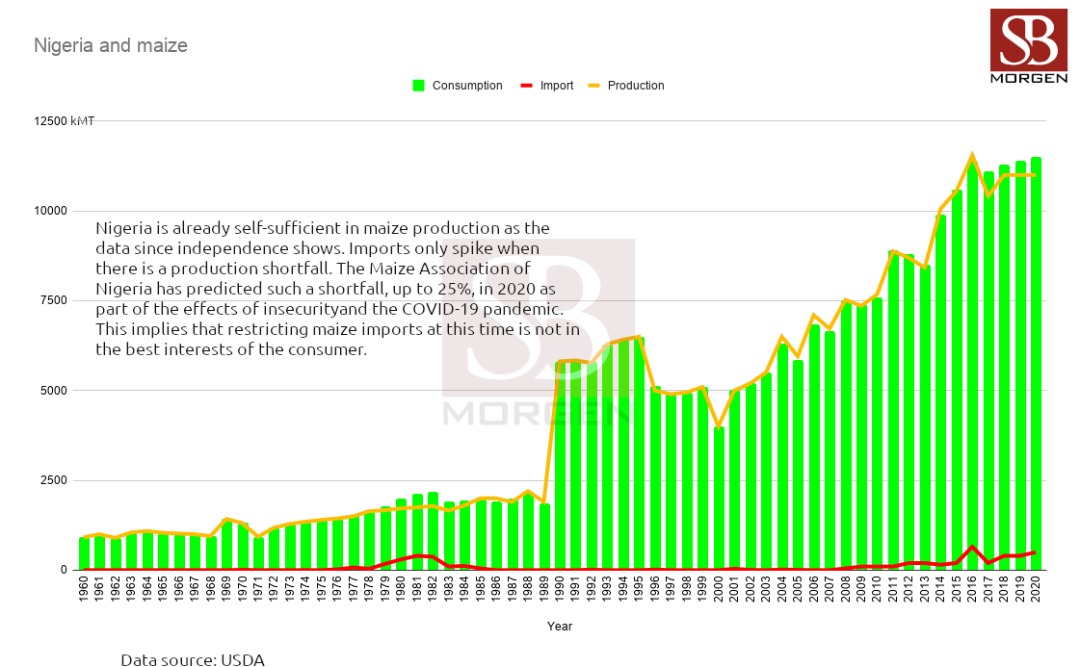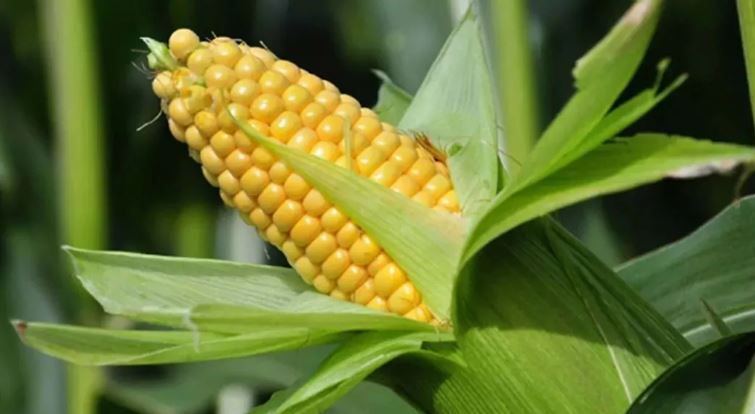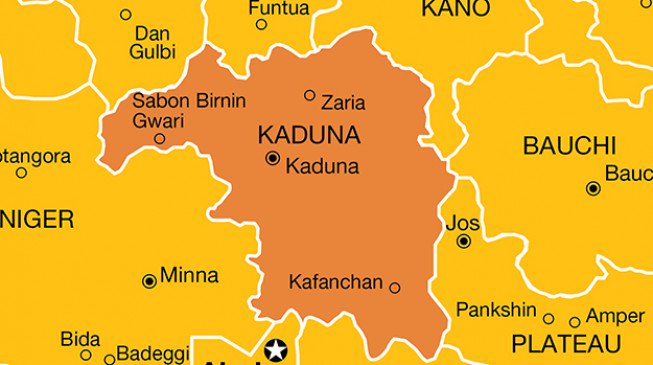Data made available by the United States Department of Agriculture (USDA) show that Nigeria has been close to attaining self-sufficiency in maize production as far back as 1960.
However, the country still imports maize; a trend the Central Bank of Nigeria (CBN) hopes to discourage.
According to the International Institute of Tropical Agriculture (IITA), Nigeria is Africa’s largest maize producer; accounting for 16 percent of the continent’s harvest.
However, IITA says Africa imports 28% of its required maize grain from countries outside the continent because local farmers cultivate crops under rain-fed conditions and irregular rains can cause shortages.
Advertisement
Nigeria imported 400,000 tons of maize in 2018 despite producing an estimated 10.7 million metric tons. In 2019, another 400,000 tons were imported despite producing an estimated 10.5 million metric tons.
Animal feed production takes up about 60 percent of the total maize produced, 10-15 percent is directly consumed by individuals in households and the balance goes to raw material/ingredient utilization in food manufacture.
The apex bank, on Monday, July 13, directed dealers to stop processing Form M for maize importation. Importers use the Form M to access forex from the CBN.
Advertisement
An infographic by SBM Intelligence shows that maize imports in Nigeria spike when there is a production shortfall.

The Maize Association of Nigeria predicts that there will be a 25 percent shortfall in local maize production in 2020 as part of the effects of insecurity and the COVID-19 pandemic.
“This implies that restricting maize imports at this time is not in the best interests of the consumer,” SBM Intelligence said.
Advertisement
Speaking on Friday, Yusuf Yila, head of CBN’s development finance department, said the apex bank will support farmers to meet the production of 12.5 million metric tons of maize in the country in the next 18 months.
Yila, who was represented by Elennor Ihua, maize champion of the development finance department, said the target of cultivating 250,000 hectares of maize for the 2020 wet season farming has been met.
He said the target for the next 18 months is to cultivate 2.5 million hectares of land and harvest 12.5 million metric tons of maize.
Advertisement
Add a comment







